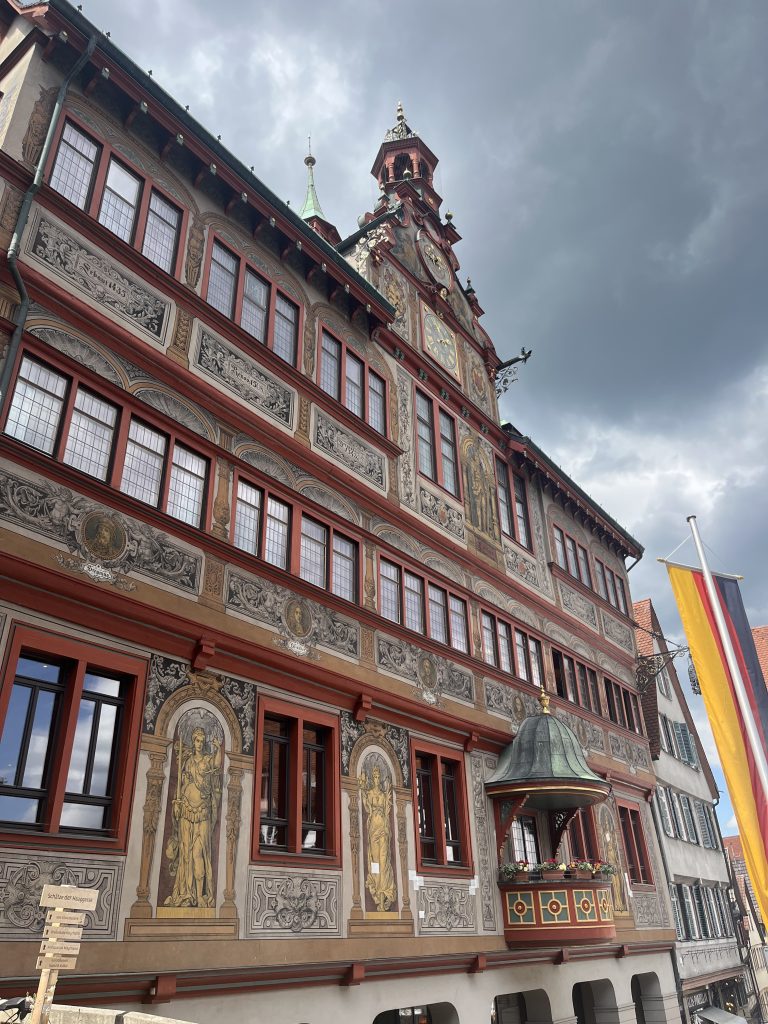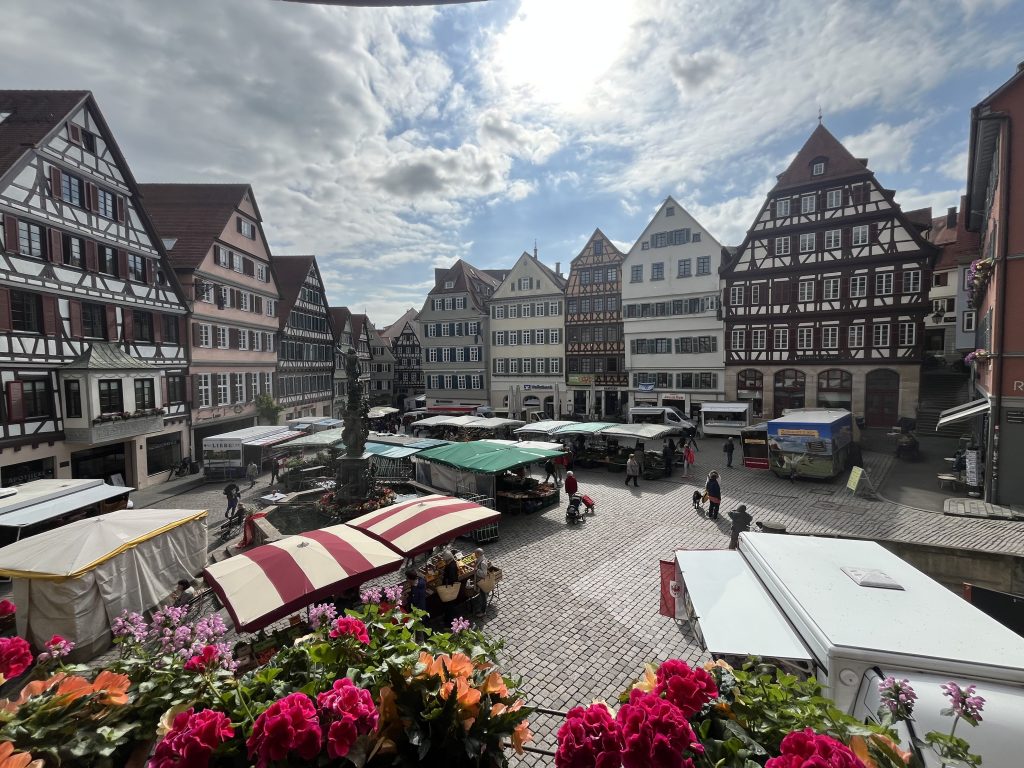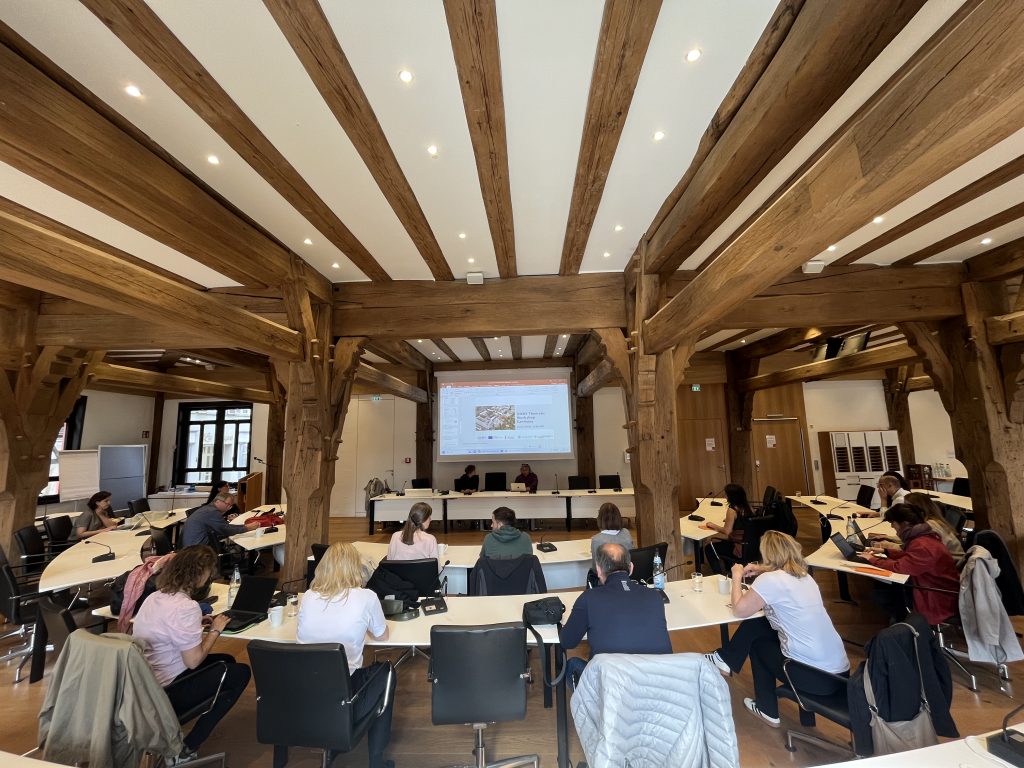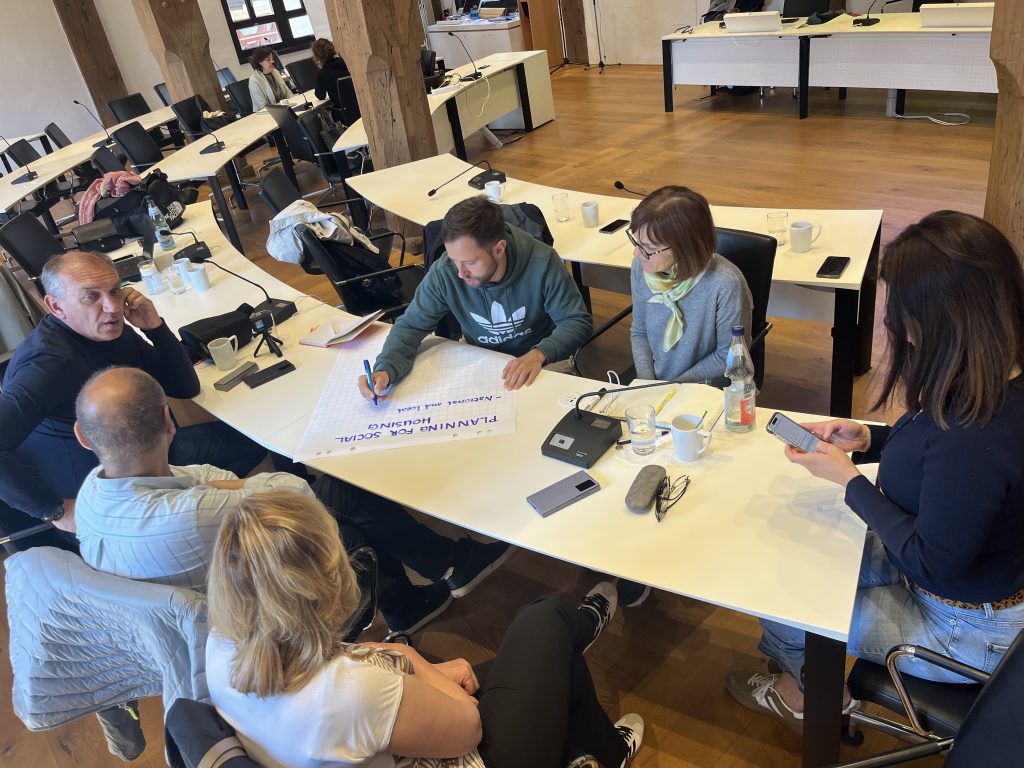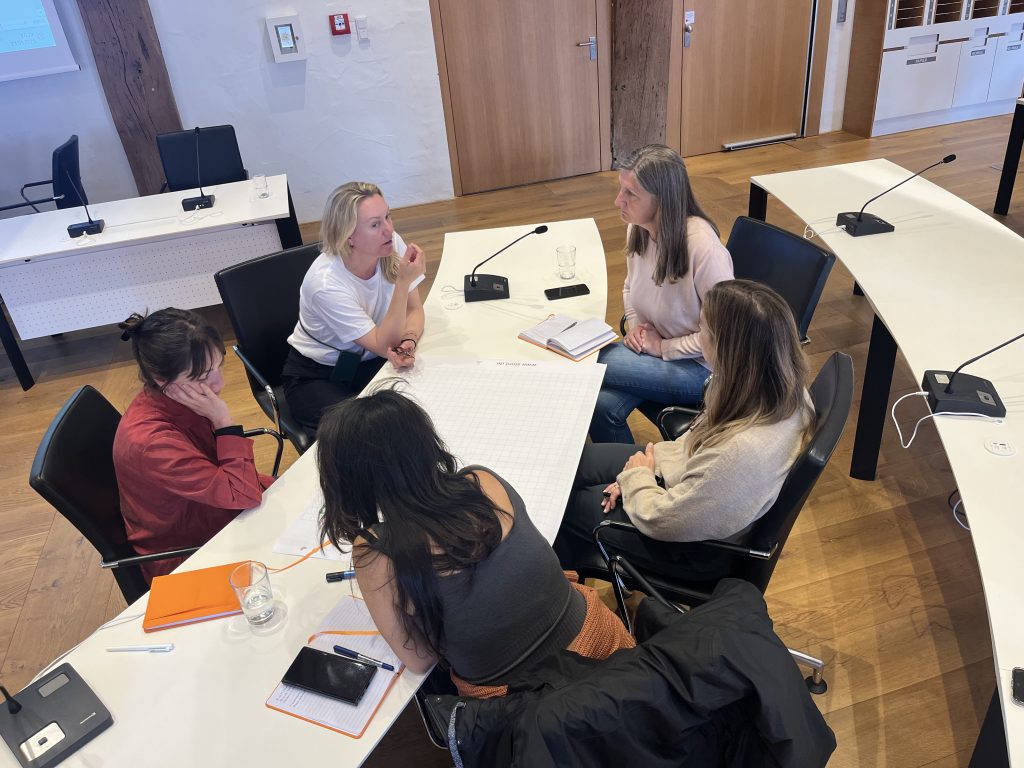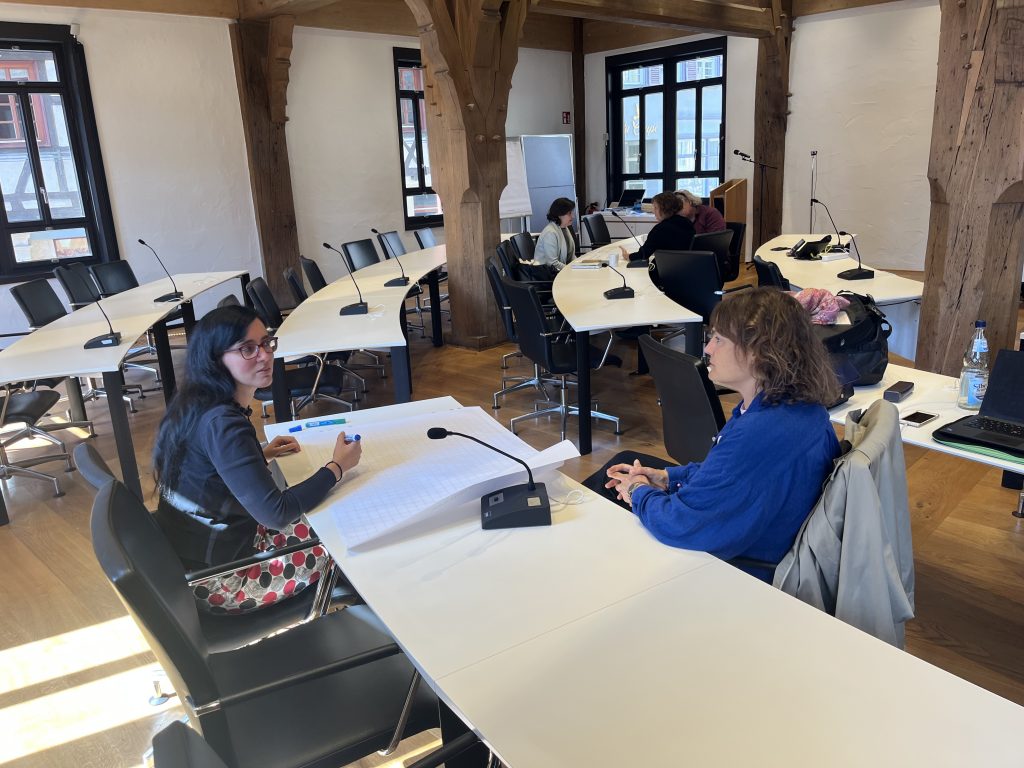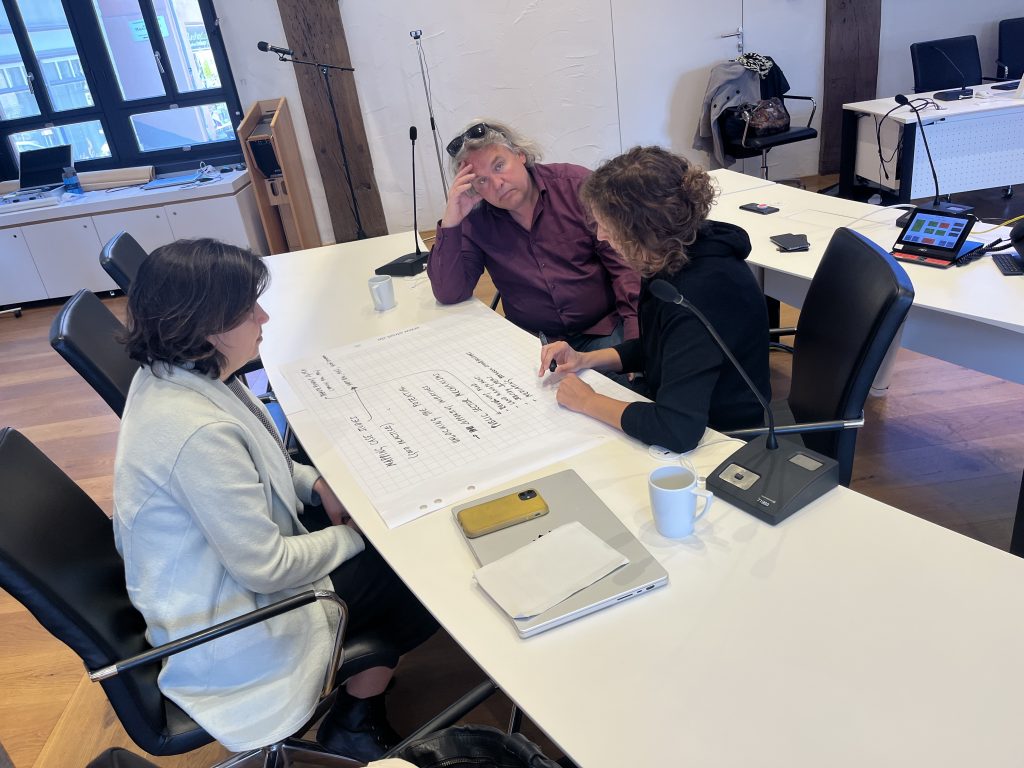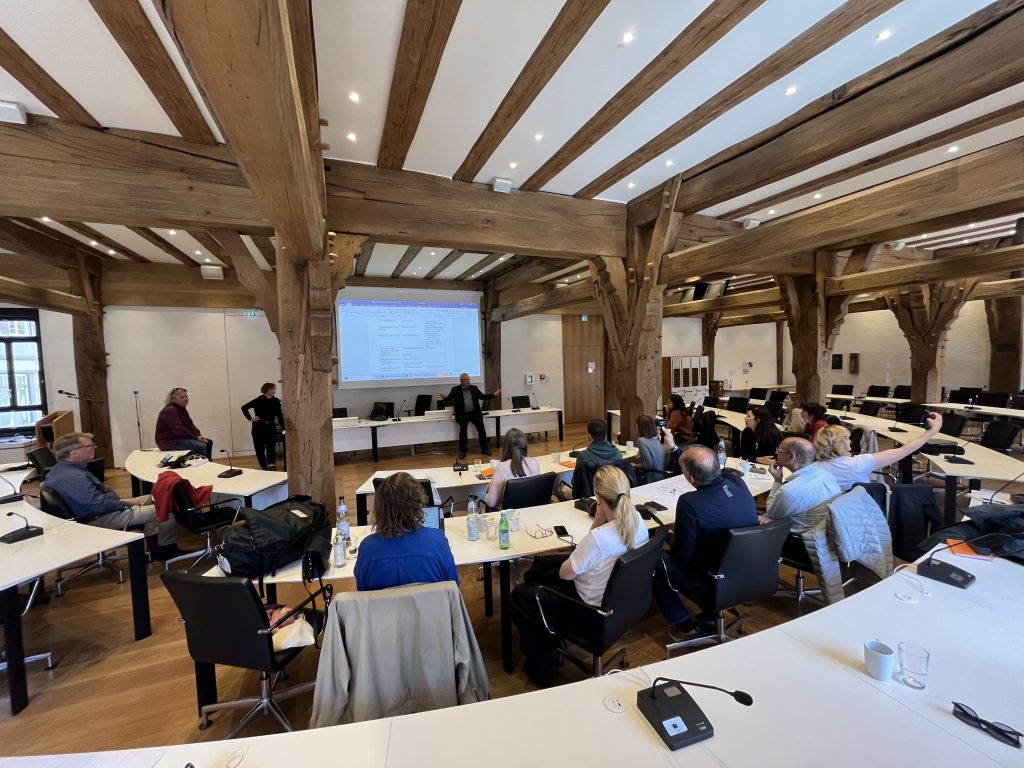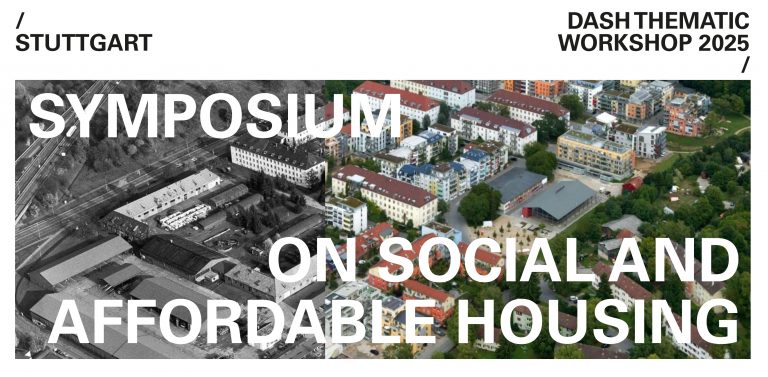In May 2025, DASH’ers met for the annual project thematic workshop. Through previous meetings and secondments, we have gotten to know each other well which provides the ground for in-depth, engaging discussions and fun times. The German hosts had prepared a busy and extremely interesting five-day program in Stuttgart and Tübingen.
Monday, May 19
By Luisa Rossini
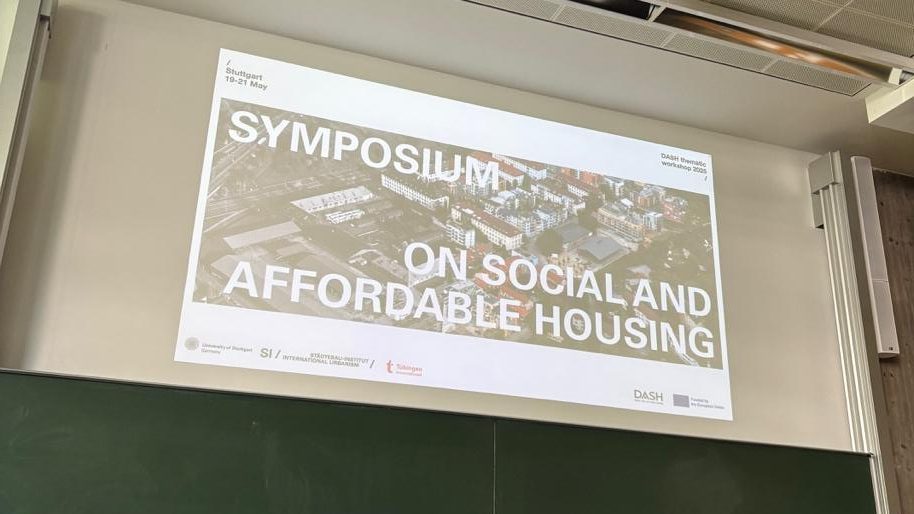
The first day of the DASH Annual Workshop, held on May 19th, 2025 at the University of Stuttgart, offered a rich and interdisciplinary engagement with current debates on social and affordable housing in Europe and beyond. The event convened representatives from the project’s partner countries, as well as a delegation from the University of Zambia, creating a diverse and stimulating environment for knowledge exchange. The opening address was delivered by Prof. Dr.-Ing. Astrid Ley, Chair of International Urbanism, who introduced the workshop’s central themes. Emphasizing the need to reflect on housing beyond its material and technical dimensions, she underlined the existential, political, and affective aspects of dwelling, particularly within contexts marked by transformation and uncertainty.
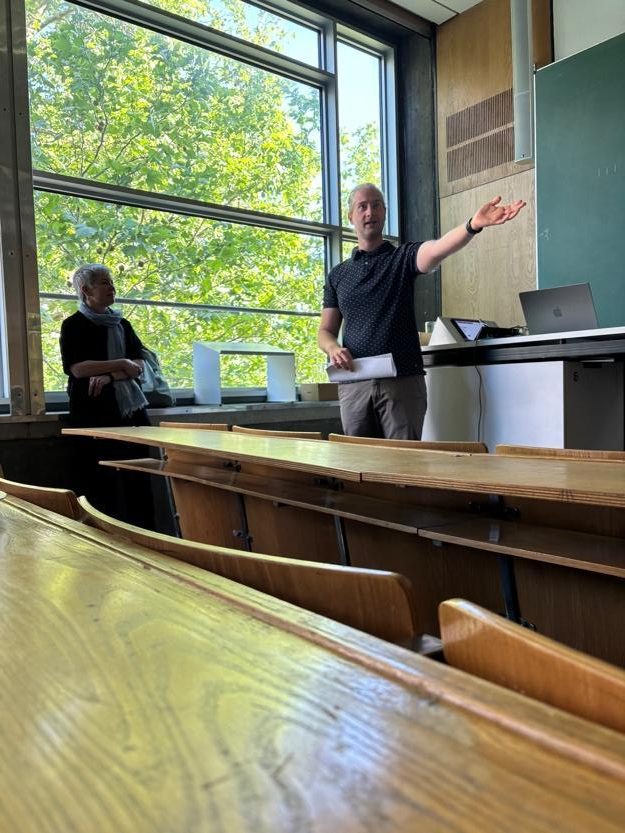
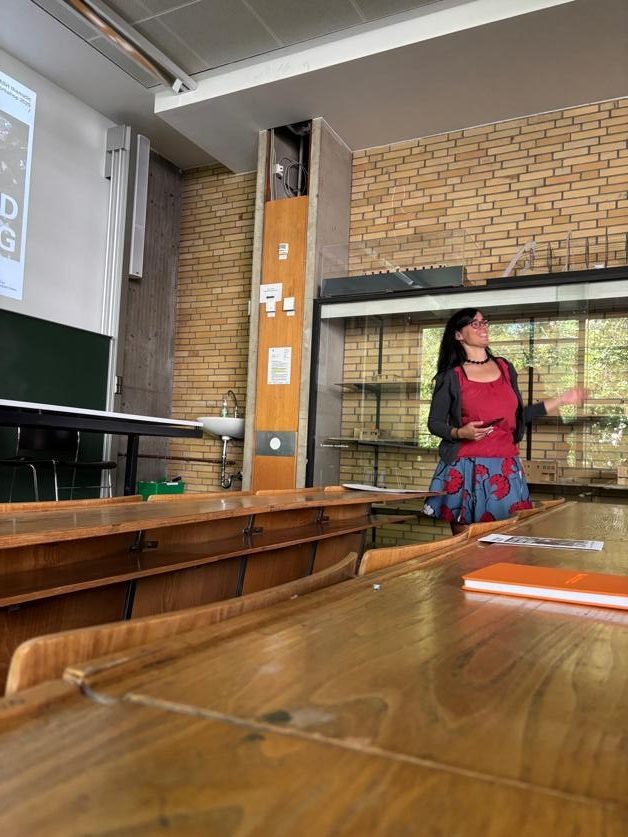
Throughout the day, Els Keunen and Manuel Heckel coordinated everything seamlessly.
The morning sessions commenced with three presentations that offered critical insights into the housing systems of Denmark, Portugal, and Serbia. The first presentation, delivered by Rikke Skovgaard Nielsen from Aalborg University, examined the Danish social housing model. Characterized as one of the most inclusive systems in Europe, the Danish sector comprises 20% of the national housing stock and is accessible to a broad population without means testing. Operated by non-profit housing associations, the model is based on a cost-rent principle and supported by a mix of resident mortgages, municipal contributions, and tenant deposits. A key institution in the sector is the National Building Fund, financed by tenant contributions, which plays a redistributive role by funding renovation and construction projects.
Despite these institutional strengths, Nielsen identified several political and structural transformations that are eroding the sector’s social character. These include urban regeneration strategies that attract wealthier tenants at the expense of vulnerable populations, restrictive legislation such as the 2018 “parallel society” law that mandates reductions in social housing through demolition and privatization, and municipal reforms that grant local authorities increased discretion in tenant allocation. Furthermore, the “flexible allocation” system, which prioritizes employed individuals and students, undermines the traditional waiting list system and limits accessibility for low-income groups. Finally, although municipalities may request up to 25% social housing in new developments, the provision remains optional and unevenly implemented. Nielsen concluded by highlighting a broader trend toward “people-testing,” whereby access is increasingly determined by individual characteristics rather than universal rights, thus calling for critical reflection on the sector’s evolving purpose.

The second presentation focused on the case of Porto, Portugal, and was delivered by representatives from Domus Social, the city’s municipal housing company. Porto manages a significant social housing portfolio of approximately 13,000 units, with an average rent ranging from €12.45 to €74 per month, underscoring its commitment to affordability. Despite ongoing efforts to add new housing units and renovate existing ones, the demand for social housing remains high, with a waiting list of over 1,200 individuals. In line with national policy trends over the past two decades, the emphasis has shifted toward refurbishment rather than new construction, driven by the need to improve energy efficiency, accessibility, and the overall quality of the existing housing stock.
Domus Social’s financial model integrates public funding with internal resources, although the low rents limit the extent of cost recovery. Major renovations rely on external support from national or European funding mechanisms. The municipality’s strategy includes acquiring private properties through the “right of first refusal” and exploring public-private partnerships to develop new social housing with high environmental standards. These efforts reflect a pragmatic approach that balances financial sustainability with social obligations, while navigating external pressures such as tourism-related housing conversion.

The third case study was presented by Brankica Jelić from Čačak Municipality and Zlata Vuksanović-Macura from the Geographical Institute “Jovan Cvijić” of the Serbian Academy of Sciences and Arts. It focused on Serbia’s post-socialist housing transformation, which has seen public housing shrink from 23% of the stock in the 1990s to less than 0.5% today. This decline, driven by privatization and market liberalization, has created a dual condition: an increase in housing units alongside a high rate of vacancy, revealing significant inefficiencies in housing allocation and policy implementation.

The presentation detailed a social housing project initiated in Čačak in 2005, supported by the Italian government and UN-Habitat, and aimed primarily at housing refugees and vulnerable populations. The project faced multiple challenges, including residents’ resistance to rental terms, widespread arrears, and legal enforcement difficulties exacerbated by public and political pressures. Proposed solutions include improved communication, tenant support services, flexible repayment mechanisms, and maintenance systems managed by either tenants or contracted professionals. The presentation underscored the need for long-term strategies and institutional support to address systemic barriers to housing stability in Serbia.

The morning concluded with a panel discussion featuring Gilbert Siame (University of Zambia), Reza Shirazi (Oxford Brookes University), and Astrid Ley (University of Stuttgart). The panelists reflected on key themes such as spatial justice, gentrification, social mix, and the integration of user perspectives in housing policy. A critical issue raised was the need to address displacement and inequality through more equitable national policy frameworks and stronger municipal capacities. The panel also emphasized the importance of measuring social sustainability and understanding affordability not merely in economic terms but also as a socially distributed and politically contested issue. The discussion highlighted co-production as a pathway to more inclusive governance, where housing is not only about buildings but also about access to services, participation, and rights.

The afternoon sessin transitioned into a workshop format, during which participants identified research themes relevant to the DASH project. Working in interdisciplinary groups, attendees developed and discussed three potential research project ideas for each group. These were then prioritized through a collective voting process, after which participants formed smaller working groups based on shared interests. This exercise fostered collaborative thinking and laid the groundwork for future research within the DASH framework.
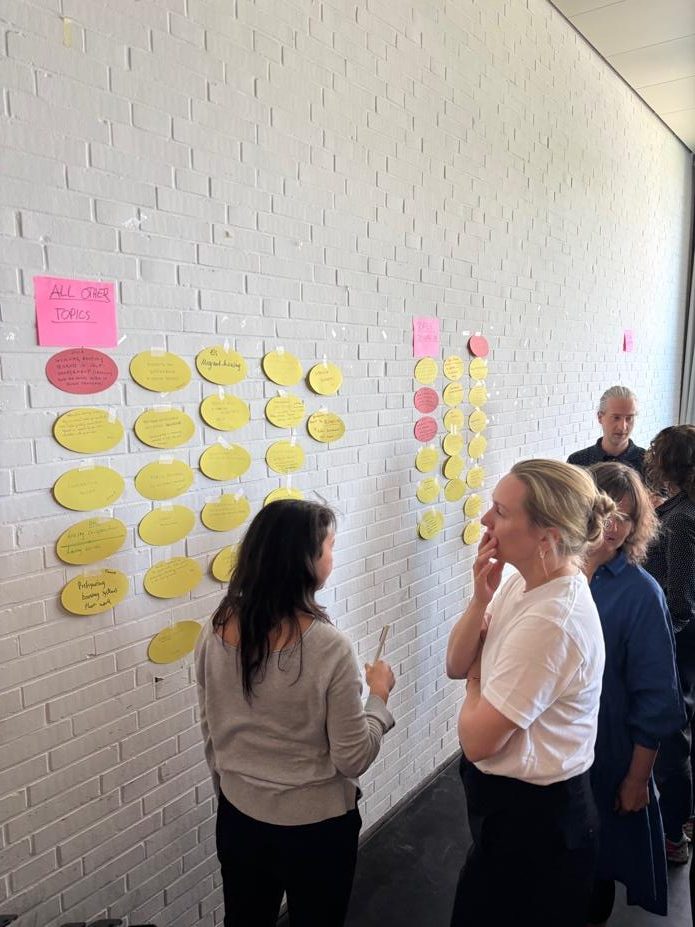
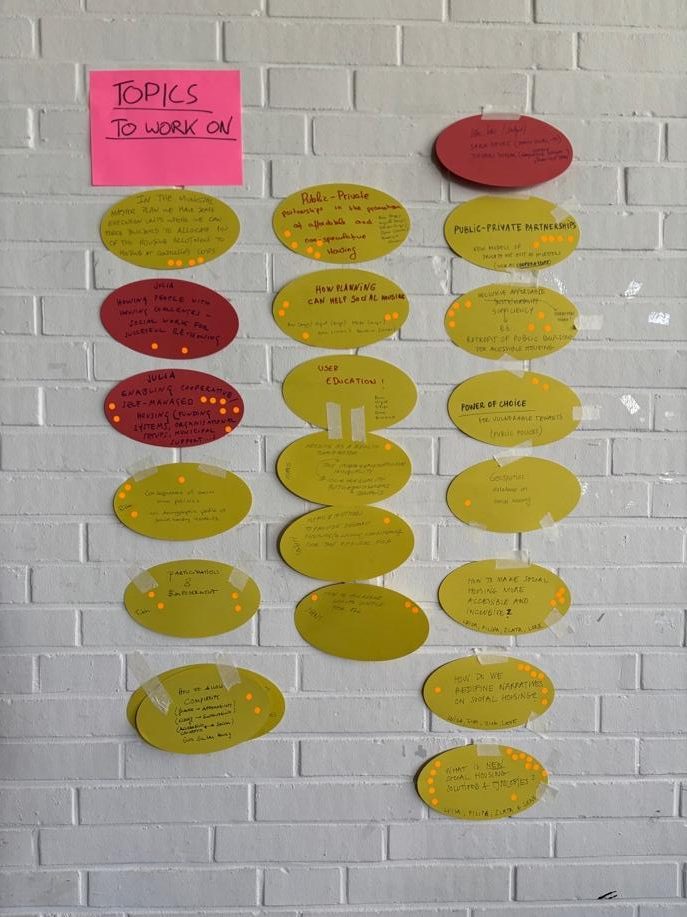
Tuesday, May 20
By Joana Pack
The second day of the DASH thematic workshop started at the University of Stuttgart with a five minute presentation of some of the groups involved in the DASH community. It began with Petar Atanackovic, representing the association Inwole, based in Potsdam-Babelsberg. Then Els Keunen and Manuel Heckel talked about the research of the Department of International Urbanism and Design at the University of Stuttgart. Afterwards, Hans Thor presented for the Aalborg University team on the main social housing questions in the Danish context.
Then, we had two special guests. The first was Andreas Hofer from IBA’27 (International Building Exhibition 2027 in Stuttgart), who presented the German housing situation and some affordable housing projects that are being developed in the city of Stuttgart for 2027. The second guest was Gilbert Siame, a professor at the University of Zambia, who raised some of the issues around new affordable housing projects in Lusaka, Zambia.
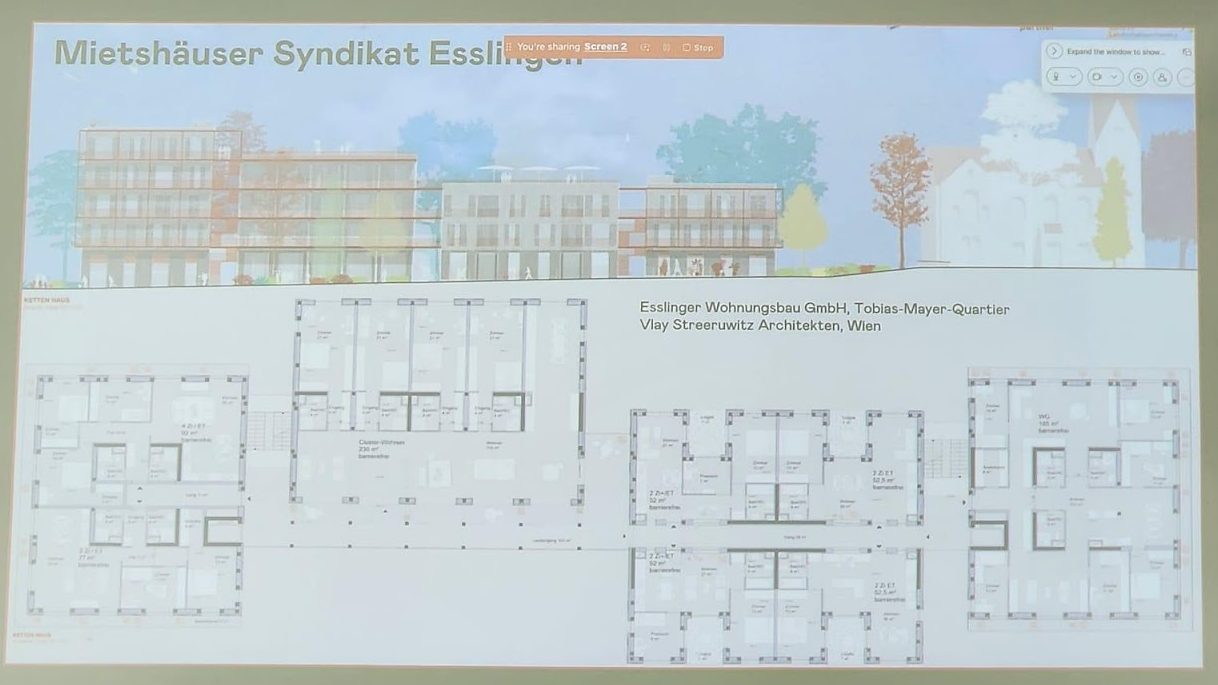
We returned to presentations by DASH groups with Alda Botelho from ICS, Lisbon, who talked about the main challenges, successes, and recent developments in affordable housing in Portugal. We finished with Zlata Vuksanović-Macura from the Geographical Institute “Jovan Cvijic” SASA, on housing in Serbia.
All the presentations were in the first hour of the day (from 9 am to 10 am); the rest of that morning was dedicated to a site visit of Stuttgart-Rot. Raquel Jaureguízar, Project Manager at IBA 2027, gave us a tour of the Schozacher area. First, we saw a row of buildings from the 1950s, the first post-war settlement in Stuttgart. Then we arrived at the site of a cooperative housing neighbourhood (nº 76 in Iba’s list). The 2-hectare site will provide houses for 600 residents and 200 workers. It is being developed by two cooperatives (Neues Heim and Zuffenhausen) with the support of IBA’27 and social enterprises. The old buildings (the buildings from the 1950s we saw at the beginning of the tour) were demolished on this plot, because they were in a bad condition and needed renovation. The cooperatives decided it would be better to build new and adjust to their current needs. So the residents were moved to a site nearby, and they can return once the new project is finished. The ten buildings will have different typologies, mixed uses, lots of green areas and shared spaces and will be affordable compared to prices on the market. Nevertheless, a question was raised about whether the old tenants will have to pay more per square metre than what they were paying before. Is it still affordable for them?

The next project we visited was Quartier Böckinger Straße (nº 33 in Iba’s list) on a 5.5 ha site, which is being led by the affordable housing company Stuttgarter Wohnungs-und Städtebaugesellschaft mbH (SWSG). The project will provide 400 houses for approximately 750 residents. It features eco-friendly buildings, a community garden, and a central experimental timber structure with flexible layouts for future housing needs.
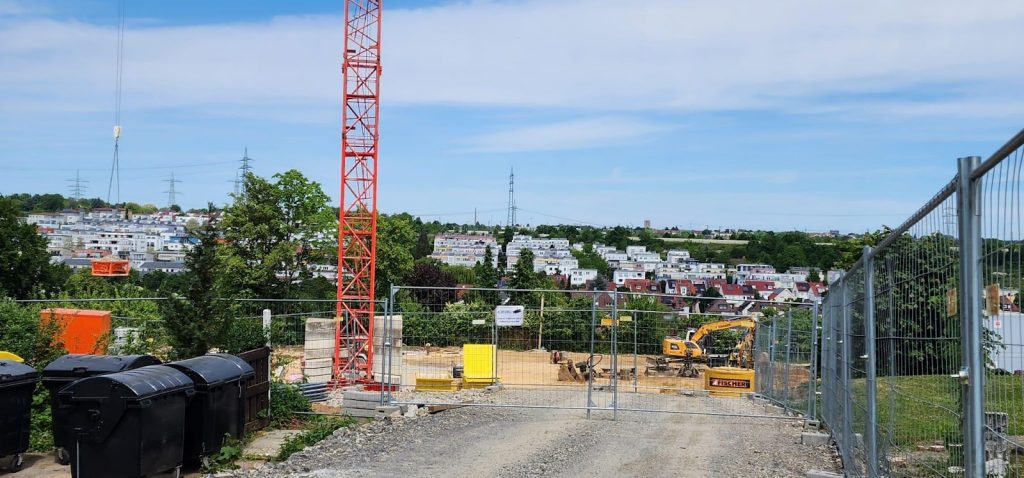
In the afternoon, we gathered again at the University of Stuttgart, and Els guided a session about the outcome of the DASH program, focused mainly on the publication of the handbook. We discussed what information we would all like to have access to, and how it should be presented (reports, graphics, pictures of case studies, academic texts, summaries, etc.). We also discussed how it could be combined with the topics of the working groups that came out of the previous day, during the workshop, and the deadline for finishing this handbook, which it was decided would be after the final annual meeting of DASH in Serbia in September / October 2026.
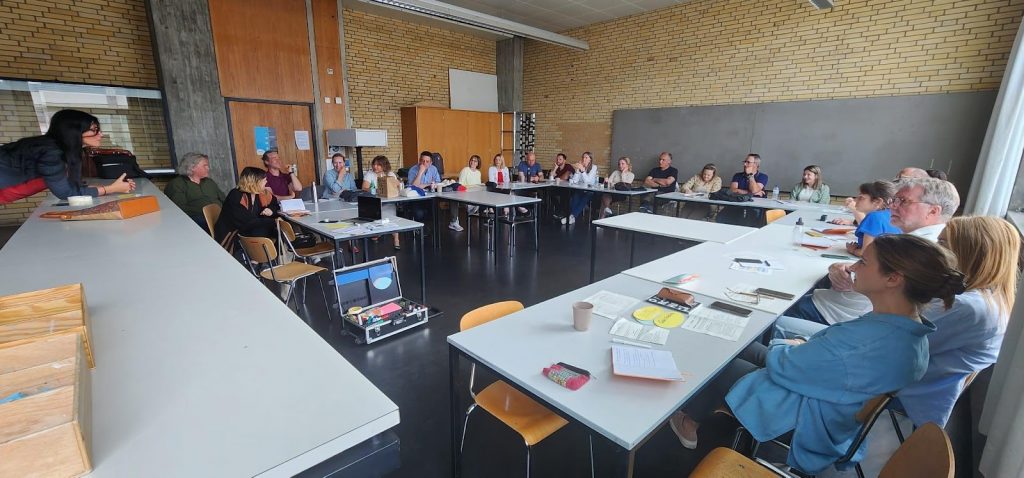

Then we had a two-hour break, after which we came back to see presentations by researchers at the University of Zambia entitled “Seeing climate change through the livelihoods and gender lens”. Due to different societal roles, women are more affected by climate change in geographies that transcend rural-urban areas. The next speaker was Professor Gilbert Siame, with “Changing African cities through Co-production”. He showed the example of an urban space in Zambia, Lusaka, that used to be abandoned, with garbage dumped there, but was transformed into a green area thanks to a process of co-production. This new urban space has emerged from the desire of local inhabitants in one of the many informal settlements in this city. It is an example that is difficult to reproduce or scale up without the support of state programmes and new policies.
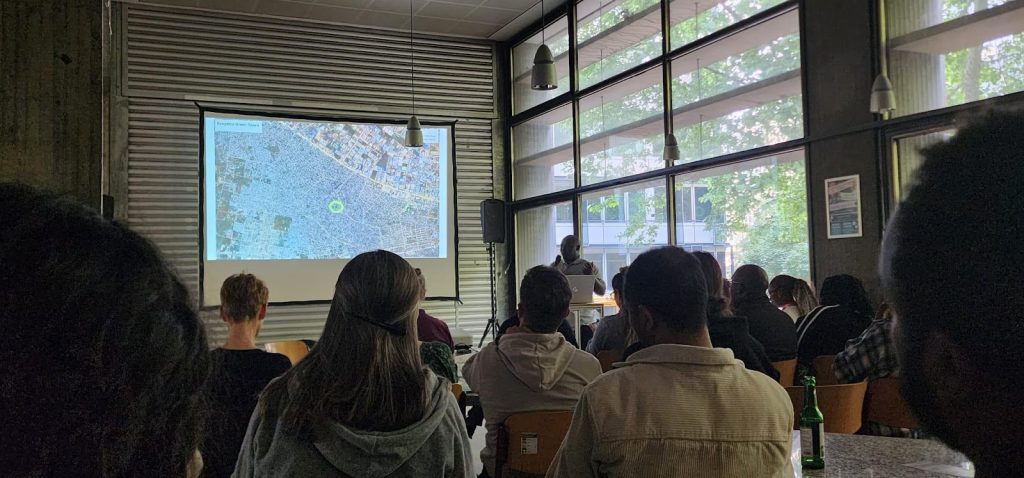
Wednesday, May 21
By Zlata Vuksanović-Macura
The third day of the DASH thematic workshop, titled Symposium on Social and Affordable Housing, was held on Wednesday, May 22, in the foyer of the K1 building at the University of Stuttgart. The morning session was dedicated to exploring German perspectives on social and affordable housing, featuring contributions from Petar Atanacković, Andreas Hofer, and Josefine Fokdal. The session also included a moderated discussion with Julia Hartmann and Markus Vogl serving as discussants. The event was opened by Astrid Ley, Chair of International Urbanism at the University of Stuttgart, who welcomed participants and emphasized the importance of cross-national and worldwide dialogue in addressing current housing challenges. In addition to the DASH project participants, the symposium was also attended by students and faculty members from the University of Zambia.

Petar Atanackovic, from INWOLE, presented the long-term continuity of the housing crisis in Germany, framing it as a persistent issue since industrialisation in the late 19th century. He outlined five historical phases, from the Empire to post-1989 reunified Germany, highlighting shifts in the roles of the state and the market, public policy responses, and social conditions. Emphasising a cyclical pattern in which market failures prompt state interventions, Petar critiqued the current reliance on free-market solutions amidst overlapping financial, energy, and climate crises.
Andreas Hofer, artistic director and CEO of IBA’27 outlined in his presentation the strategic goals of the International Building Exhibition 2027 in the Stuttgart Metropolitan Region, emphasising innovative responses to Germany’s ongoing housing crisis. He highlighted the legacy of modernist planning (the Weissenhof Estate) while addressing current urban challenges such as climate change, demographic shifts, and economic restructuring. Key initiatives include the transformation of existing housing and commercial areas, the development of new urban typologies, and the integration of sustainable mobility, green infrastructure, and cutting-edge construction technologies. In the conclusion of his presentation, Andreas advocated for a productive, inclusive, and adaptable urban landscape, supported by data on housing shortages, ownership patterns, and changing living conditions.
Josefine Fokdal from the BLEIB focused her presentation on the urgent need to address Germany’s housing backlog by shifting the emphasis from extensive new construction, which is often environmentally and socially unsustainable, towards optimising and reusing existing space. She criticised current housing policies that exacerbate land consumption, urban sprawl, and climate emissions, advocating for a diversified, multi-scale approach to affordable housing delivery instead. Strategies include converting vacant buildings, redistributing underused residential space, and supporting co-living models, all while aligning political instruments across national, regional, and local levels. Josefine highlighted the potential of “invisible space” and sufficiency-oriented solutions as key to reconciling social and ecological goals.
After the presentations, insights and comments were provided by Julia Hartmann from the Municipality of Tübingen and Markus Vogl from the Department of International Urbanism at the University of Stuttgart. Both contributions enriched the discussion by bridging practical and academic viewpoints.
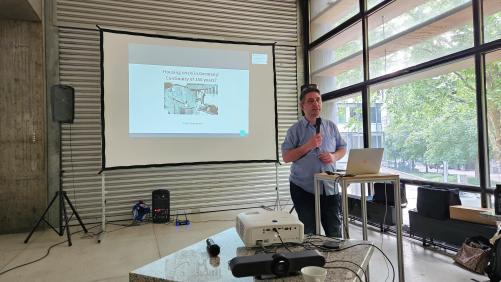
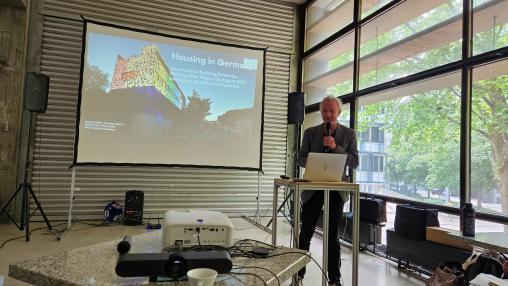
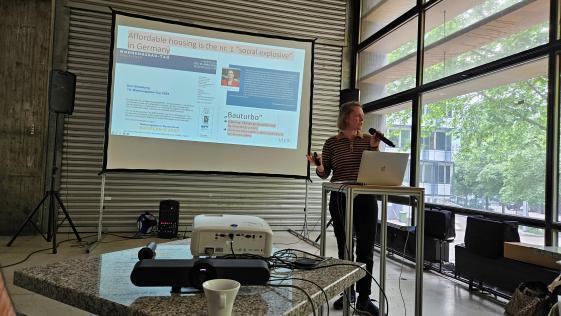
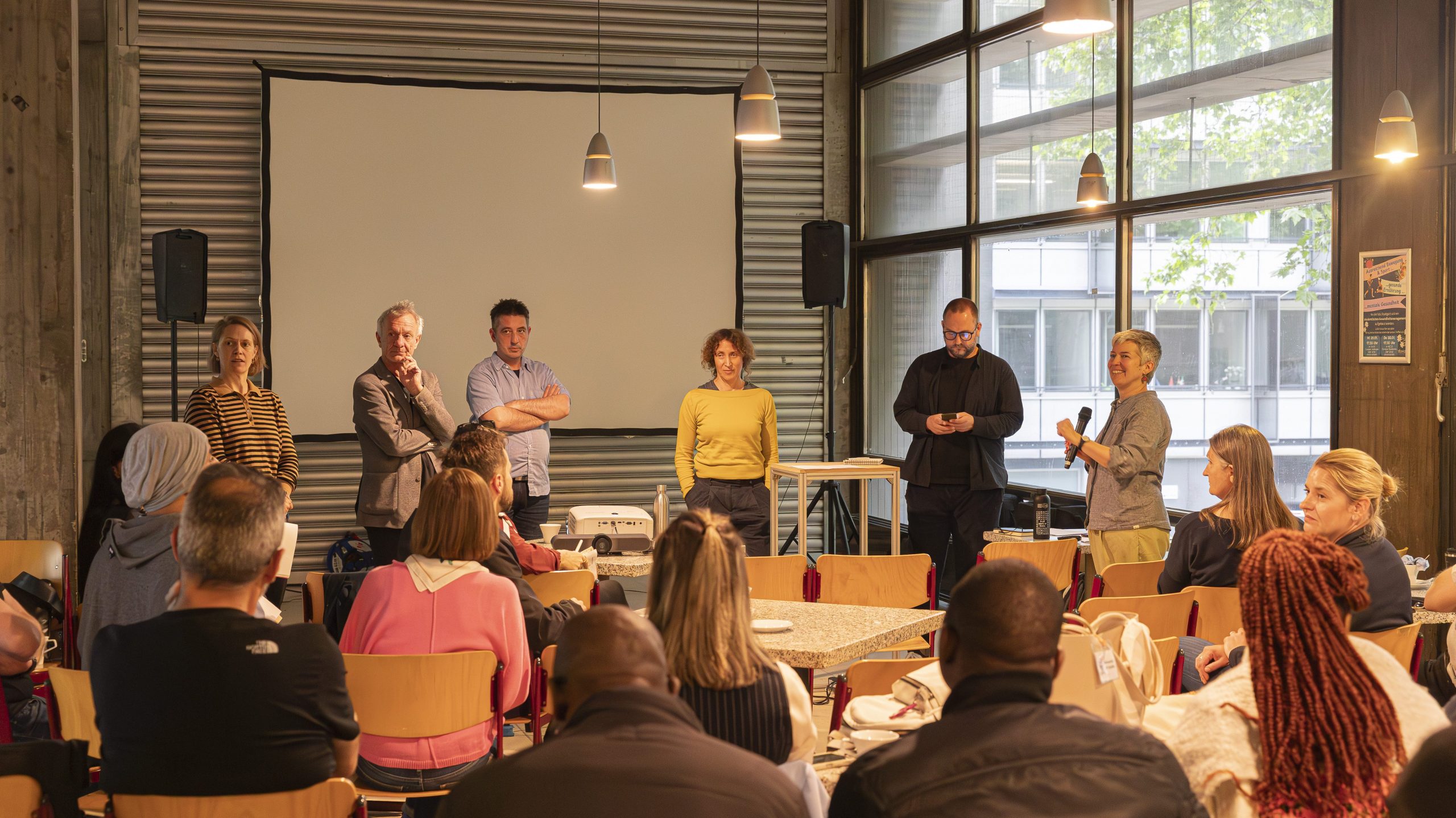
The afternoon session focused on the co-production activities undertaken by the DASH participants. The University of Stuttgart team, Els Keunen and Manuel Heckel, facilitated a cross-evaluation workshop, drawing on presentations and fieldwork carried out earlier that day and over the preceding two days. The workshop employed the World Café methodology and was structured around four thematic pillars: justice, sustainability, affordability, and sufficiency. Each thematic table was moderated by a designated host, with participants rotating through three discussion rounds. The first round was devoted to identifying key insights and unresolved questions; the second invited participants to reflect on the themes concerning their own local contexts; and the third centred on formulating policy recommendations for the German context. Following 90 minutes of discussion, each table host synthesised the group deliberations and presented the main findings and proposed recommendations in a plenary session.
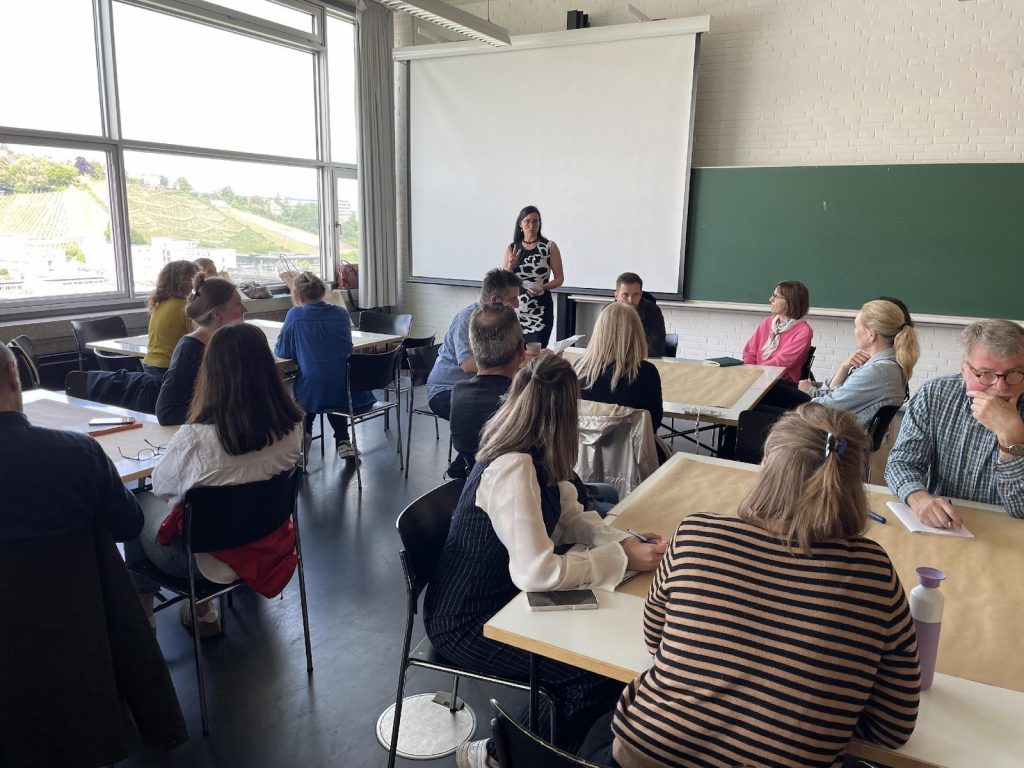
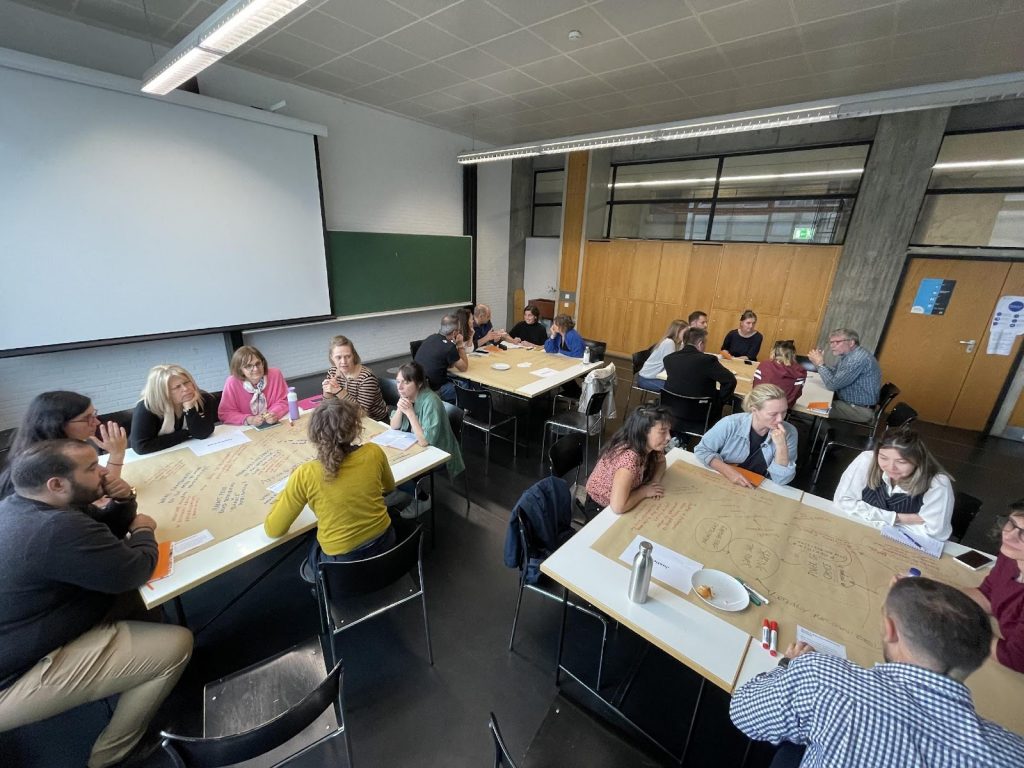
In the late afternoon, at the invitation of Els Keunen, Zlata Vuksanović-Macura held an interview session with a group of students enrolled in the course Critical Perspectives from Southern Urbanism. These students had chosen to focus their research on the housing and urban upgrading of Roma settlements in Serbia. During the session, Zlata shared insights from her extensive research and fieldwork, highlighting the structural challenges, policy gaps, and social stigmas affecting Roma communities in the context of housing provision and settlement regularisation. The discussion also offered the students a brief overview of the origins and daily life of the Roma community. The exchange further centred on the importance of the proactive engagement of professionals in adopting a rights-based, participatory approach in tackling spatial and social exclusion.
Following the session, Els and Zlata continued their exchange in an informal setting over a conversation at a local pub.
Thursday, May 22
By Filipa Cabrita
Our day began with a visit to an inspiring housing project for the elderly in a small village, featuring innovative timber construction. There, we had the opportunity to meet the head of Nestbau, a community-led housing initiative in Tübingen. Nestbau connects individuals seeking affordable living and working spaces near the city centre with sustainable investors.
The morning continued with the DASH annual meeting at the Universitätsstadt Tübingen Technisches Rathaus, where members reviewed the budget, coordinated the calendar, and discussed key administrative matters. Topics included expectations regarding the common pool and secondments, with thoughtful dialogue around potential adjustments for the year ahead.
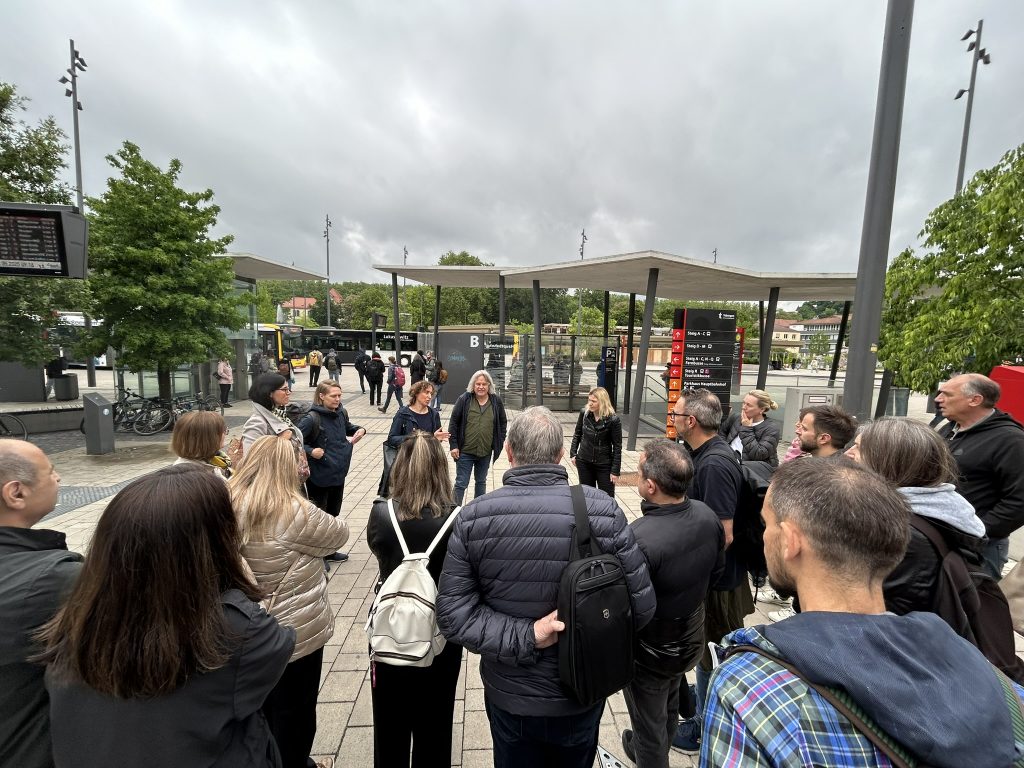
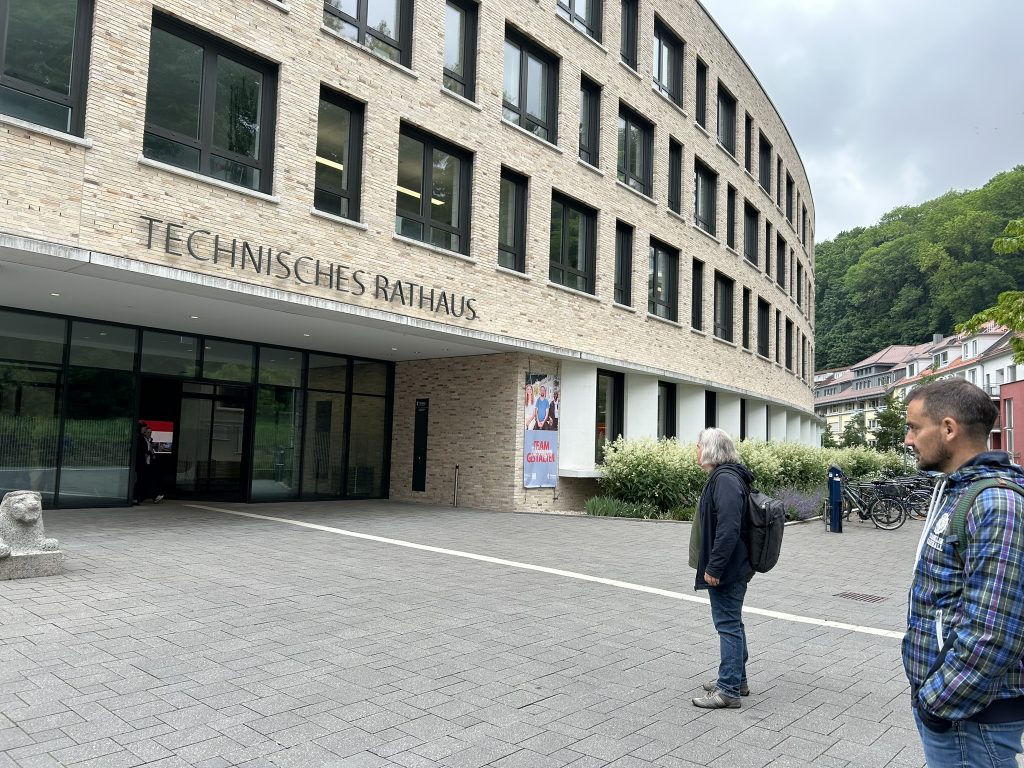
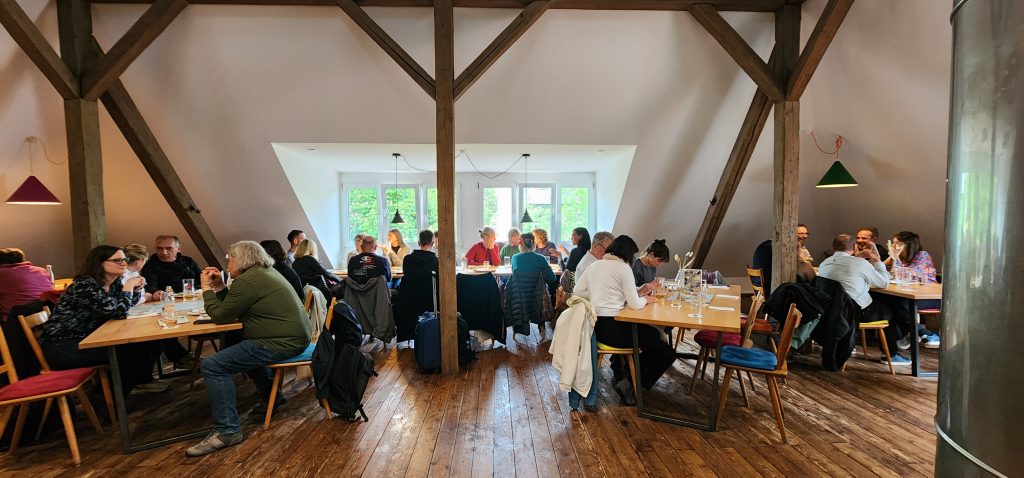
After a shared lunch at Gaststätte Loretto, an inclusive restaurant operated by Freundeskreis Mensch e.V., where individuals with and without disabilities work together to provide a welcoming dining experience, we split into three excursions exploring different housing innovations across Tübingen::
- Excursion 1: A guided tour through Tübingen’s evolving urban quarters, where former military barracks and industrial sites have been transformed into vibrant, co-housing-led neighborhoods such as the French and Loretto Quarters.
- Excursion 2: A visit to a building under construction, being repurposed to provide housing for both refugees and young care professionals—an inclusive initiative addressing urgent housing and workforce needs.
- Excursion 3: A visit to an innovative and inspiring citizen-led co-living project: a flatshare for people living with dementia, offering a strong sense of community through shared care and daily life, self-organized by their close family members.
We reconvened in the late afternoon to visit three additional examples of community-led and innovative housing. We began with the Four Houses development—one of Tübingen’s newest MHS housing projects. This was followed by a visit to a recent municipal investment featuring cluster apartments designed for young professionals, and finally, a group housing initiative developed by the city’s roof cooperative. Together, these projects showcase a diverse and inclusive range of housing solutions, each with its own innovative approach to meeting today’s complex and evolving housing needs.
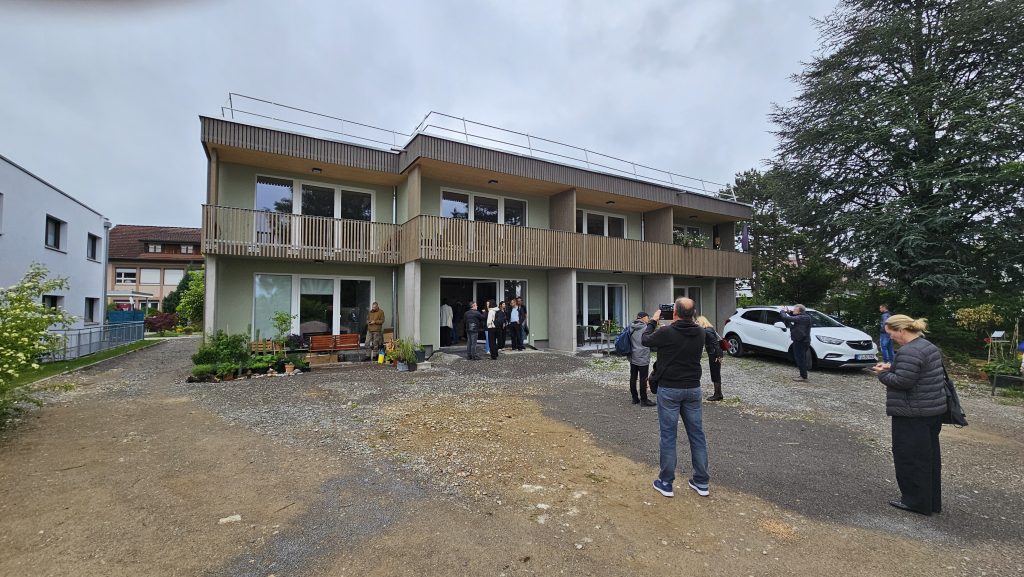
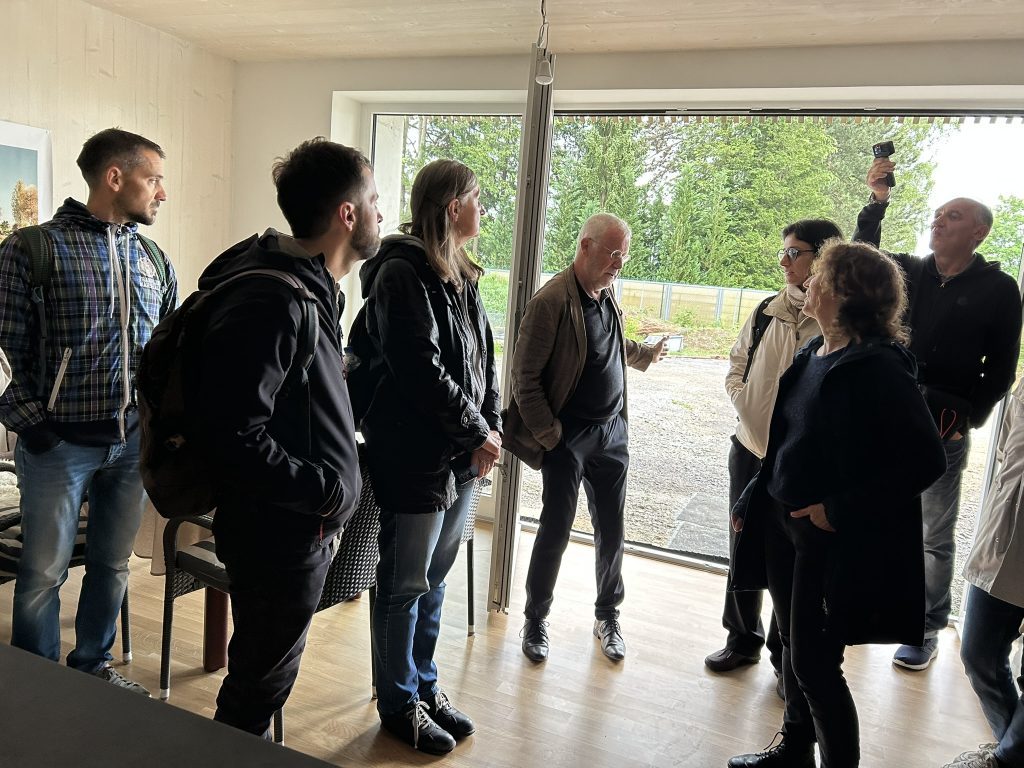
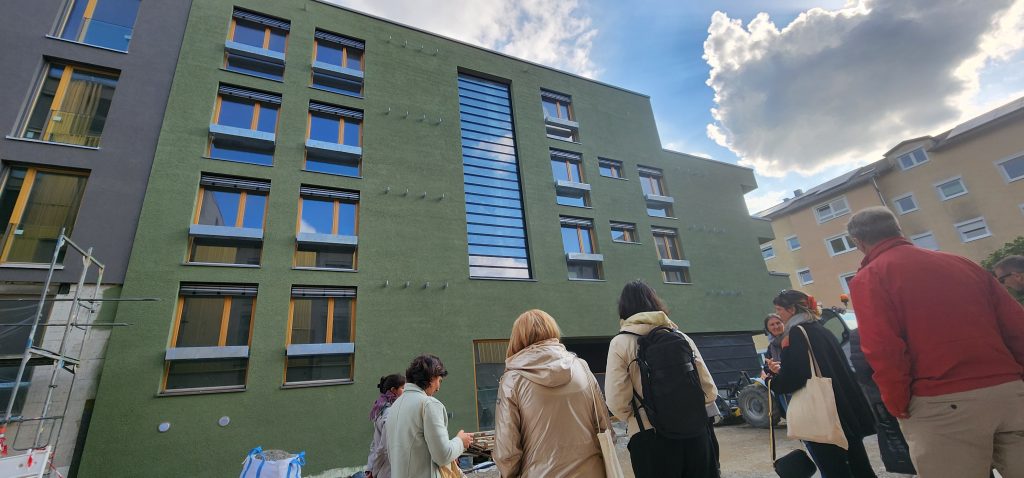

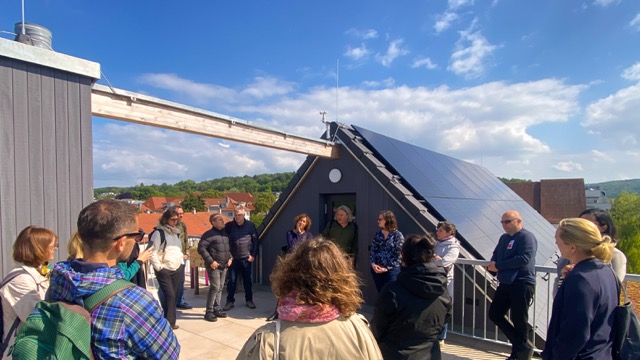
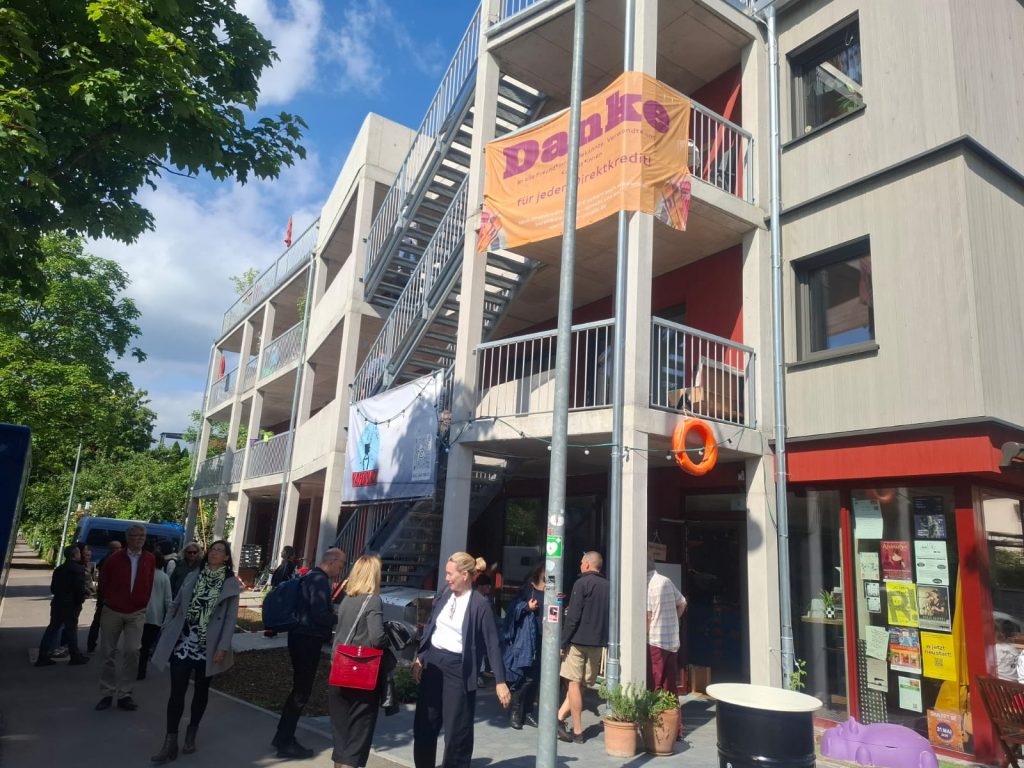
Friday, May 23
By Marko Filipović
The final day of the DASH project thematic workshop in Germany for the year 2025 was designated for Tübingen. Following three days in Stuttgart and the first, exceptionally active day in Tübingen, the concluding program took place. The hosts were once again Julia Hartmann and Axel Burkhardt, Commissioners for Housing and Accessibility from the Department of Planning and Building of the Tübingen Municipality (Universitätsstadt Tübingen). On this occasion, the gathering of DASH project participants was held at the Historic Town Hall (Rathaus am Marktplatz). The program commenced at 9:30 AM, with the meeting taking place in the council meeting room. The planned topic for the morning session was “DASH / Way Forward”.
Work continued on the most critical topics within the framework of the Annual Meeting. Els Keunen from the University of Stuttgart, together with representatives from all teams, addressed issues of paramount importance for the continued functioning of the project. The central theme was the planning of secondments for all teams, both for the remainder of the current year and for the following year. Additionally, discussions encompassed the Handbook, the exhibition, the final conference in Serbia, as well as updates to project materials.
In the second part of the morning program, work continued within the working groups established during the workshop in Stuttgart. The working groups focused on the following topics: New Social Housing Typologies and Cases, Redefining Narratives on Social Housing, How Planning Can Support Social Housing, and New Public-Private Partnerships: Cooperative Social Housing.
Subsequently, a meeting with the Mayor took place. The presenter was Cord Soehlke, Mayor of the Department for Planning and Construction. He provided the DASH project participants with an overview of the municipality’s operational system and all issues related to housing. He placed particular emphasis on the significance and influence of the University on the city and its infrastructure, as well as the number of employees connected to the University. He also told the attendees about the housing planning processes and the challenges he and his team faced.
During the lunch with the Mayor, other participants who had been attending parallel meetings joined us. The hosts had organized, for interested participants, parallel sessions with specialized municipal departments as well as stakeholders involved in providing social housing. For the afternoon program, two excursions were offered: a visit to the Technopark and a tour of the rural surroundings, thus concluding this year’s workshop in the best possible manner.
